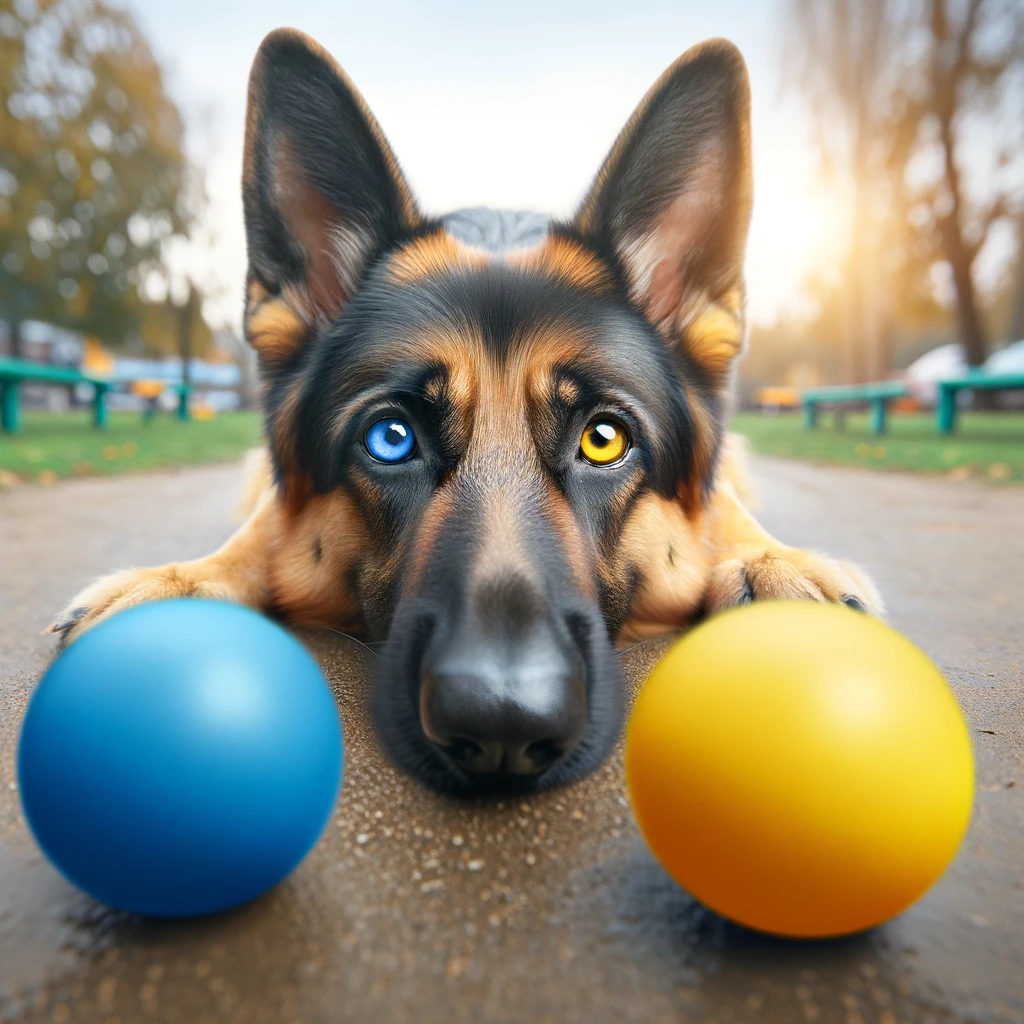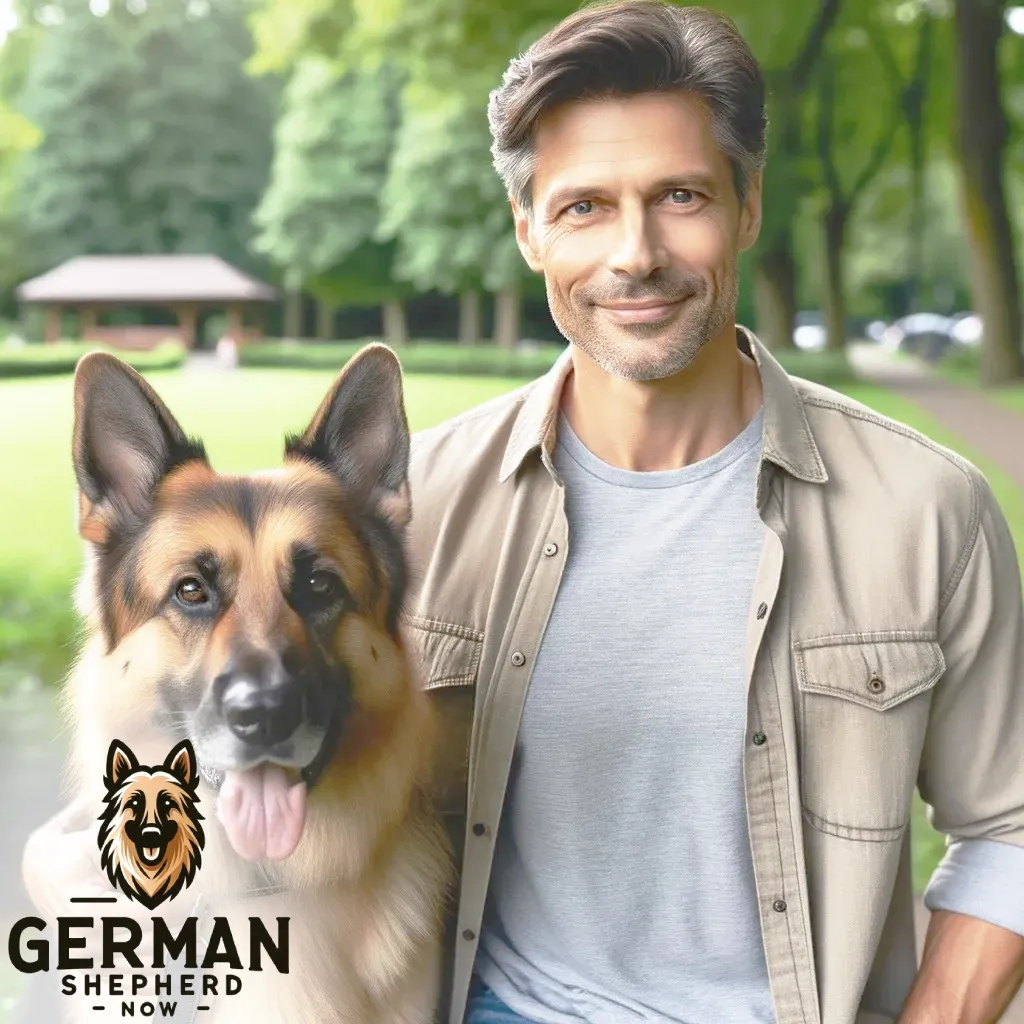What Colors Can German Shepherds See

German Shepherds are known to have dichromatic vision, meaning they see in shades of blue and yellow.
This is due to the number and type of cones in their eyes, which are sensitive to these colors.
While they may not see the same range of colors as humans, their vision is well-suited for their natural herding and protection instincts.
It’s essential to consider their limited color perception when training or engaging them in activities that distinguish between colors.
German Shepherd Vision: How Do They See the World?
Much like other dogs, German Shepherds see the world from humans due to their unique eye structure. Their vision is based on dichromatic color perception, which means they have two types of color receptors in their eyes.
These receptors are best at detecting blue and yellow wavelengths, making these the primary colors they see.
Reds and greens, on the other hand, are not distinguishable from them and appear more as shades of grey. This type of vision is similar to red-green color blindness in humans.
While their color vision might be limited, German Shepherds have excellent night vision and motion detection. Their eyes have more rod cells sensitive to low light and movement.
These adaptations result from their evolutionary history, where seeing in dim light and detecting the slightest movements were crucial for survival and hunting.
So, when it comes to color, German Shepherds might not experience the vividness and variety humans do, but their vision is tailored to their needs as active and alert dogs.
Understanding this aspect of their vision can help owners select toys and training tools in colors that are more visible to them, enhancing their interaction and learning experiences.
Comparing Human Vision and German Shepherd Vision
The way humans and German Shepherds see the world is fascinatingly different. These differences stem from the distinct structures and capabilities of our eyes.
Understanding these variations can provide insights into how German Shepherds interact with their environment and can help train and care for them effectively.
Let’s compare the critical aspects of human vision with those of German Shepherds in a table format.
| Aspect | Human Vision | German Shepherd Vision |
| Color Perception | Trichromatic (can see a broad spectrum of colors including red, green, blue) | Dichromatic (primarily sees shades of blue and yellow; reds and greens are perceived as shades of grey) |
| Night Vision | Limited (humans have fewer rod cells in the eyes) | Excellent (more rod cells, which are sensitive to low light) |
| Motion Detection | Relatively good (but not as sharp as dogs) | Excellent (particularly sensitive to movement, an evolutionary trait for hunting) |
| Detail and Acuity | High (can see fine details and small objects clearly) | Lower than humans (focuses more on movement than detailed images) |
| Field of View | Approximately 180 degrees | Around 240 to 250 degrees (wider field of view, but less depth perception) |
| Depth Perception | Excellent (due to overlapping areas of vision from both eyes) | Good, but not as precise as humans (wider field of view reduces depth perception) |
| Sensitivity to Light | Less sensitive (compared to dogs) | Highly sensitive (better at detecting light and shadow changes, aiding in night vision) |
| Evolutionary Adaptation | Adapted for detailed, color-rich vision suitable for varied activities | Adapted for hunting, with an emphasis on movement detection and low-light vision |
Preferred Colors for German Shepherds Based on Vision
Due to their dichromatic vision, German Shepherds are more attracted to blue and yellow objects.
These colors stand out more to them than reds and greens, which they cannot distinguish well.
When choosing toys, training equipment, or even decor that the dog interacts with, opting for blues and yellows can make these items more appealing and engaging for a German Shepherd.
Understanding their color perception helps them select items they can see and are more likely to interact with, enhancing their playtime and training sessions.
How to Improve German Shepherd Vision
German Shepherds, like all dogs, have limitations in their vision, but there are some steps you can take to support and improve their eyesight.
Here are some tips to help enhance your German Shepherd’s vision:
- Regular Vet Check-ups: Regular visits to the vet can help monitor your dog’s eye health and catch any issues early on.
- Balanced Diet: A balanced diet with essential nutrients like vitamin A, beta-carotene, and omega-3 fatty acids can support eye health.
- Eye Supplements: Specific eye supplements can support and improve your German Shepherd’s vision. These supplements often contain zeaxanthin, vitamin C, and vitamin E, which can help neutralize free radicals and support eye health.
- Special Foods: Certain foods, such as blueberries, carrots, kale, and omega-3-rich fish, can also support and improve your dog’s eyesight.
- Medications: In some cases, medicines prescribed by the vet, such as eye drops or antibiotics, can help treat specific eye conditions and improve your dog’s vision.
Incorporating these tips into your German Shepherd’s care routine can help support and improve their vision, enhancing their overall quality of life.
Final Thought
Due to their dichromatic vision, German Shepherds see the world in blue and yellow.
Understanding this helps choose the right colors for training and toys, enhancing their engagement and responsiveness.
Despite their limited color perception, their vision adapts to their natural roles, ensuring they remain active and alert companions.

I’m Martin, and I grew up in the super cool city of Seattle. You know, the place with all the incredible mountains and forests? Yeah, that’s my playground!
Ever since I was little, I’ve been all about nature. I used to wander around the woods with a notebook, doodling all the cool plants and animals I’d find.
